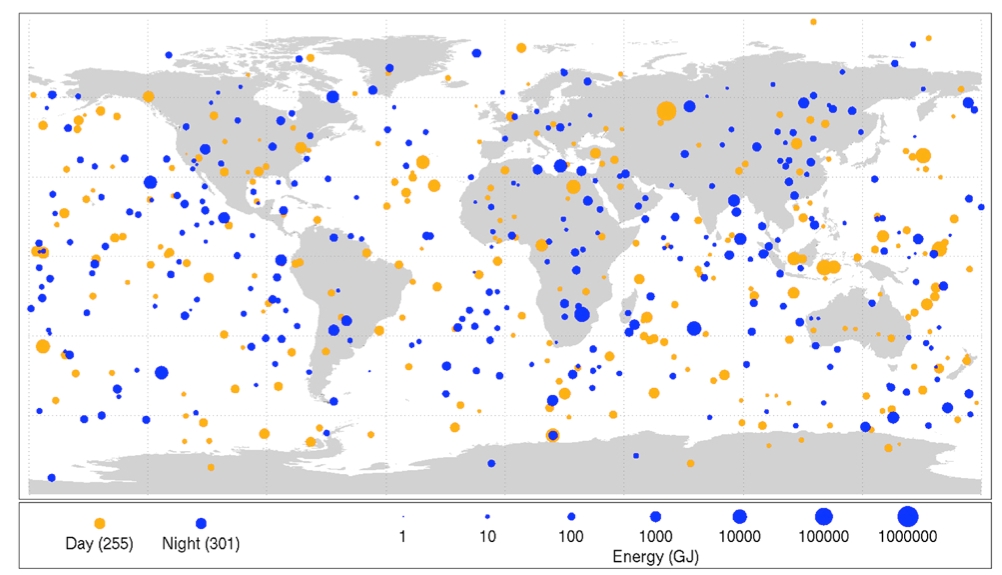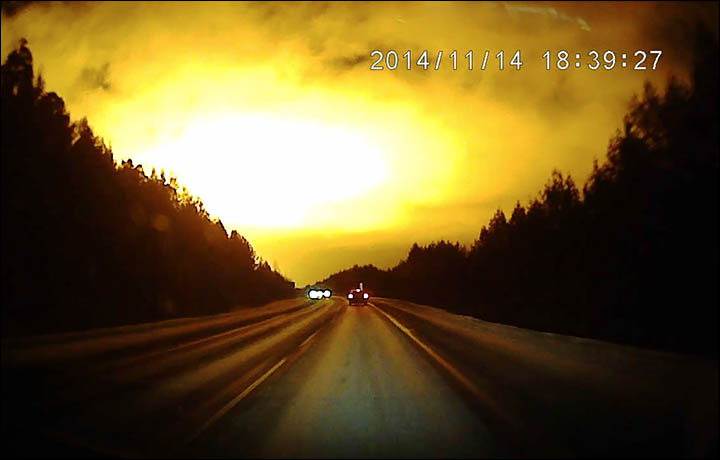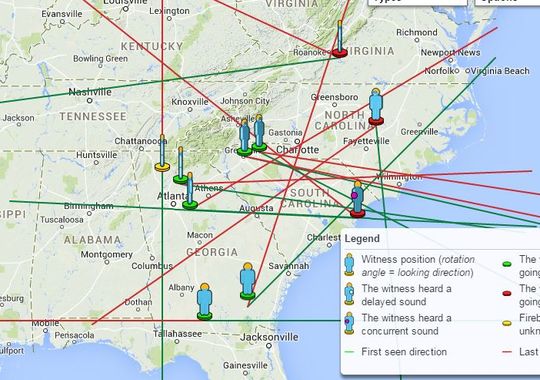
© NASA/JPL
NASA's Near Earth Object (NEO) Program
published a diagram a few days ago, showing 556 mapped comet/asteroid fragment impacts on Earth over the last 20 years (see above). NASA says it's based on data gathered from 1994-2013 on small asteroids impacting Earth's atmosphere to create 'fireballs', adding that "
the sizes of yellow dots (daytime impacts) and blue dots (nighttime impacts) are proportional to the optical radiated energy of impacts measured in billions of Joules (GJ) of energy, and show the location of impacts from objects about 1 meter (3 feet) to almost 20 meters (60 feet) in size."
Note the random distribution of impacts around the globe. But note also what the map and accompanying NASA report do
not indicate:
the year-on-year distribution of those impact events over that 20-year period. This omission enables them to give the following misleading subheading to their report:
It happens all the time: small asteroids impact Earth's atmosphere
By not providing a year-on-year breakdown of the impacts, and by including their rather banal headline, NASA leaves us to assume that these events were more or less evenly distributed over those 20 years - on average, 27 fireball events of note in 2013 (556 total events/20 years). But we have serious doubts about this.
We know from the American Meteor Society that
there were nearly 3,500 observed events in 2013 alone - and just in the US. Check out the data for yourself: browse through the AMS Events database. Select for
events in 2013 with both 'sound' and 'fragmentation' reported. Note how many of last year's 184 US fireball events, that were large enough to be both seen breaking up
and heard exploding, were witnessed from multiple US states. Now go back to the NASA world fireball map from 1994-2013. Assuming its random global distribution is accurate, we can try a little exercise in extrapolation to get a figure for significant fireball events globally in 2013.



Comment: This is just one of several that have been spotted this week.
- Spectacular meteorite/fireball lights up Oklahoma morning skies (video)
Still unexplained, is the 'event' that turned night into day in Urals, Russia.